13 of the weirdest turntables ever made
From the sublime to the ridiculous

We love a traditional record player here at What Hi-Fi?, but there's something to be said for those turntables with a twist, that think outside the box and push the format to its limits – be that from a design, concept or features perspective.
In honour of them, we've scoured the web and our archives to bring you some of the weirdest, most interesting designs we've seen over the years. We've got something for everyone, including a Lego turntable, an underwater deck and even one that floats your record in mid air. But which is your favourite?
1. Audio-Technica Soundburger
The original Audio-Technica Soundburger (main image, also known as the AT727) launched in the mid-1980s and, as you can probably guess, it got the name from the fact it looks like a burger when a record is sandwiched between platter and lid.
It was a compact, portable turntable, that could be both battery or mains powered, and was available in a choice of red, yellow or blue, and cost £89 at launch.
As part of its 60th anniversary celebrations, Audio-Technica actually brought out the Soundburger in a limited edition that sold out globally in days. So, in 2023, it announced it was coming back as a permanent feature in its line up.
The new model keeps those iconic retro looks, of course, but does come with some modern touches, including Bluetooth connectivity and a USB-C port for charging. There's also an RCA port for hooking it up to your home stereo or speaker system with wires instead of Bluetooth.
It'll last 12 hours on its built-in battery, and costs £199, in a choice of white, black or yellow.
The latest hi-fi, home cinema and tech news, reviews, buying advice and deals, direct to your inbox.
2. Miniot Wheel
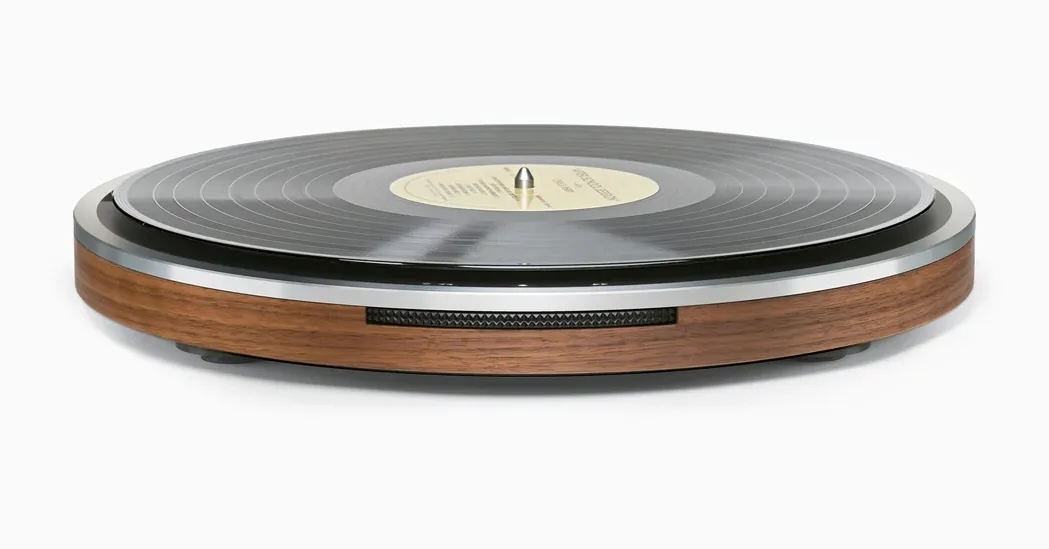
A Kickstarter project back in 2017 and now on its second generation, the Miniot Wheel might look like a turntable with all the important bits missing, but in fact, all the main components are "safely hidden" inside the platter, so the turntable actually plays the side of the record that’s facing down.
Handmade in Holland, it can be played upright on its included stand, mounted on a wall or laid flat on a table, and rather unusually, has volume and playback controls on the side.
There's a pre-amp on board, which can't be bypassed, and a 3.5mm mini jack output, for hooking up to headphones, active speakers or your amplifier via an adapter.
It doesn't come cheap though. In your choice of cherry or walnut wood finish and with the base AT95E cartridge, it'll set you back a cool £1,737 – and more if you upgrade that stylus.
3. Sony PS-F5
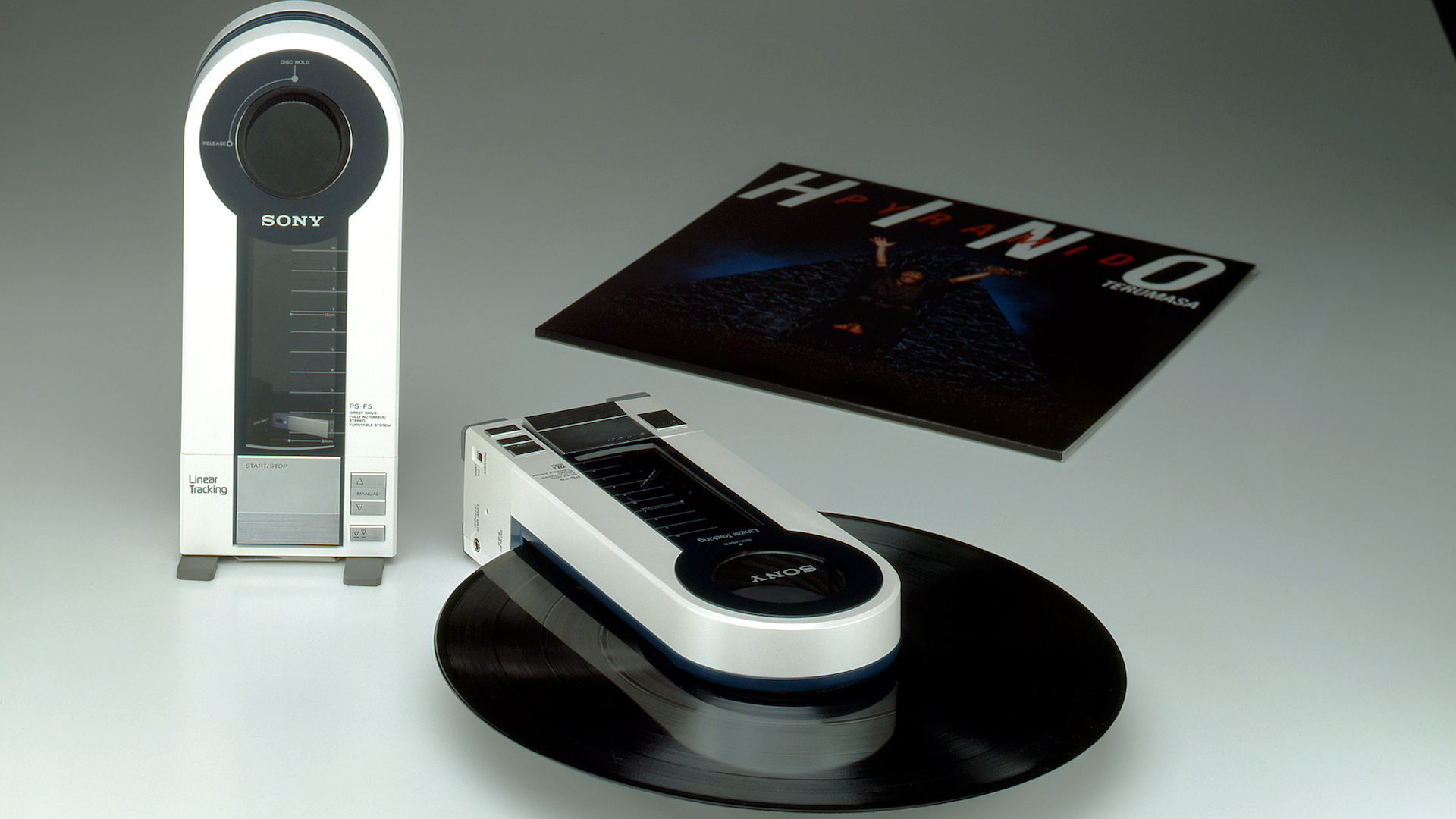
If you ever felt the need for a portable, vertically playing turntable, then may we present the Sony PS-T5. Released in 1983 – the same year as the look-a-like Soundburger – it combined a linear-tracking, direct-drive design, with a manual clamping system to keep your record in place and could be run with AA batteries or its external power supply.
The PS-F5 could play 7" and 12" records, and if you happened to turn up somewhere with no speakers or amp, you (and a friend) could enjoy audio through its twin headphone sockets.
Sony also released a version called the PS-F9, which added a more precise speed control, a motorised clamp system, 3.5mm line output and, in some territories, an FM transmitter.
4. Mag-Lev Audio ML1
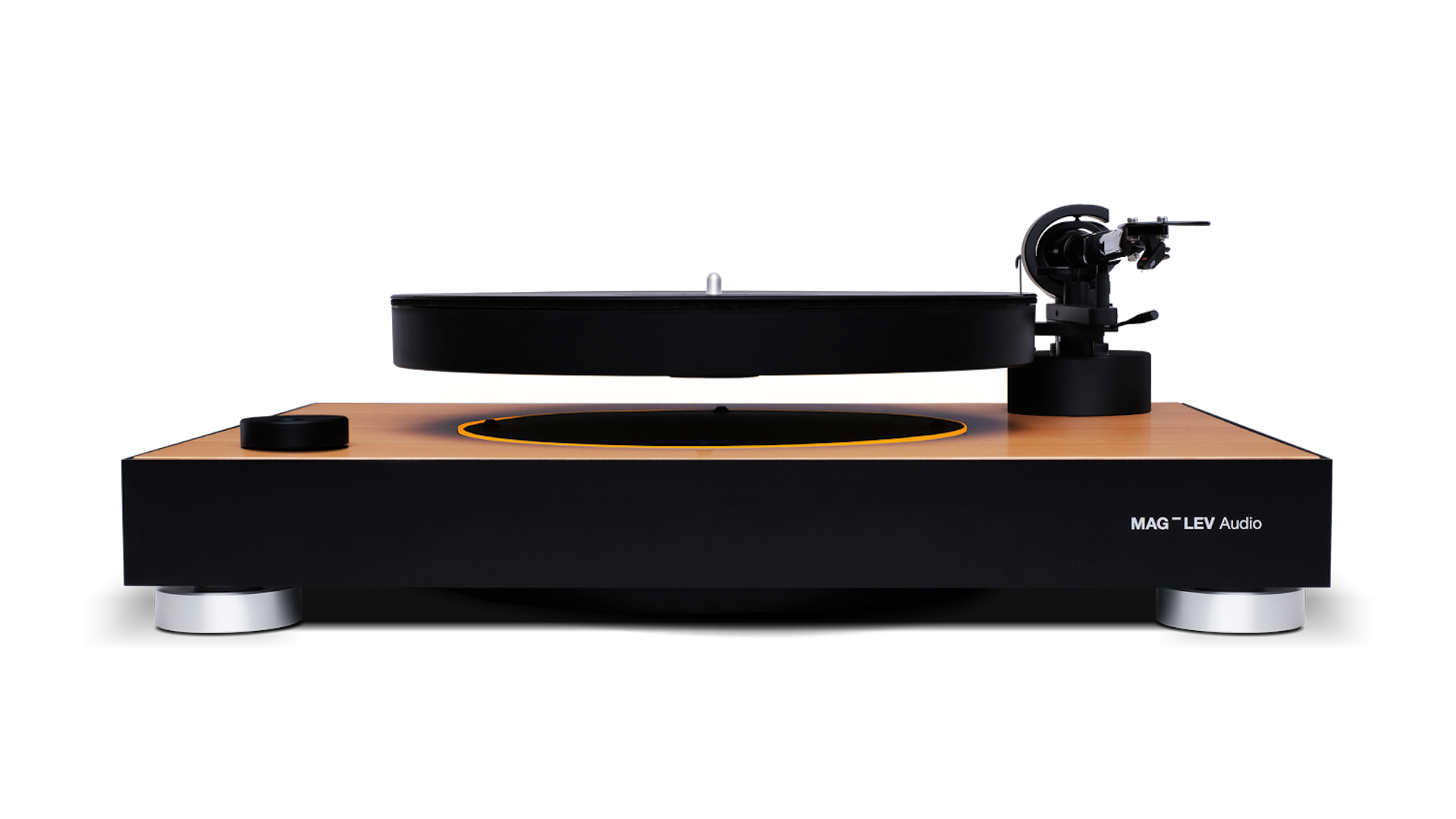
There’s no turntable quite like the Mag-Lev Audio ML1. The platter hovers in place like a UFO holding its landing pattern, using magnets to rotate and keep itself in position.
There are no moving parts inside, no belt and no motor. The platter balances on its feet when not in use, but once the tonearm is moved into position, the feet retract, leaving the ABS plastic and glass fibre platter suspended in mid-air.
It’s a semi-automatic deck that works at both 33⅓ and 45rpm and comes with a pre-fitted Pro-Ject 9cc tonearm and Ortofon OM 10 cartridge. Pricing starts at £2450.
5. Lego 'The Planet' turntable

We all know you can build pretty much anything from the dinky Danish bricks, so we shouldn’t be surprised that a fully-fledged Lego record player surfaced in 2015. It was built by a chap called Hayarobi, who’s also been responsible for a number of other wacky Lego creations over the years.
Named ‘The Planet’, the turntable uses 2405 pieces including a Lego Power Functions Battery Box and M-Motor. There’s a Lego power button and a Lego switch for 33⅓ and 45rpm. Lego tyres have been used to help the tonearm’s counterbalance. The only non-Lego part is the Audio-Technica 1Ea cartridge.
6. Love turntable

Dubbed “the world’s first intelligent turntable”, the Love has been designed to be smarter than your average record player.
The main unit looks like a chunky mobile phone, and packs a linear tracking sensor, built-in cartridge and stylus, to read your records and stream them to speakers or headphones over Bluetooth. It works with 7", 10" and 12" records at speeds of 33⅓ and 45rpm.
There’s even a Love app for iOS and Android, which allows you to control things like speed, volume and to skip a track. It’s connected to a database which helps set the speed automatically and allows the track listing and album art to be shown on your device. The Love turntable is available to pre-order now for $329.
7. Stokyo Record Runner
Mention the word 'turntable', and a dinky plastic VW camper van isn’t the first image that springs to mind. But the Stokyo Record Runner (previously known as the Soundwagon) is a design that’s been doing the rounds for over 35 years, and still claims to be the world’s smallest record player. It's officially licensed by Volkswagon, weighs just 111 grams and fits in the palm of your hand.
Everything is built in, including the motor, amplifier and speaker, with the stylus and cartridge sourced from Audio-Technica. All you need to do is place it on a vinyl (33⅓ records only), flick the power switch and the Record Runner will do the rest, circling your vinyl record and playing back your music. Just make sure you’ve got a steady supply of AA batteries to hand.
8. Finial LT-1

The Finial LT-1 demonstrated that you don’t need a stylus to read a record – a laser beam will do just fine. The benefits are simple: nothing physical touches the record, so your vinyl won’t wear and you don’t get any tracking noise. A prototype LT-1 was launched at CES 1986 with a $2500 price tag but any chance of success was ruined by an economic recession and, more importantly, the emergence of the good ol’ compact disc.
The Finial player never made it into production, but the patents were sold to a Japanese turntable maker called BSR which then created the company ELP Japan. The ELP-1XA went on sale in 1997 for $20,500 and used two lasers to read the groove and three to control the head. Over time the 1XA has evolved into two separate models, the LT-basic or the LT-master, with the former rumoured to cost around $15,000.
9. Crosley RSD3

This dinky, 3-inch deck was announced in January 2019 as a novel way of marking the Record Store Day of that year. Three-inch vinyl isn't exactly a new format – in Japan, decks this size are much more common, and referred to as 8-ban record players. The only issue? The miniature discs only hold around four minutes of music, so you won't be able to relax to your music for long.
For the $70 player, Crosley partnered with Japan’s Toyokasei vinyl manufacturing plant to provide a number of 3" discs to spin on it. It's equipped with an Audio-Technica moving-magnet cartridge, built-in speakers, a headphone jack and pitch-shift slider. You can power it by battery or through USB. Let's hope the tracking force isn't too heavy...
10. Audiowood Barky
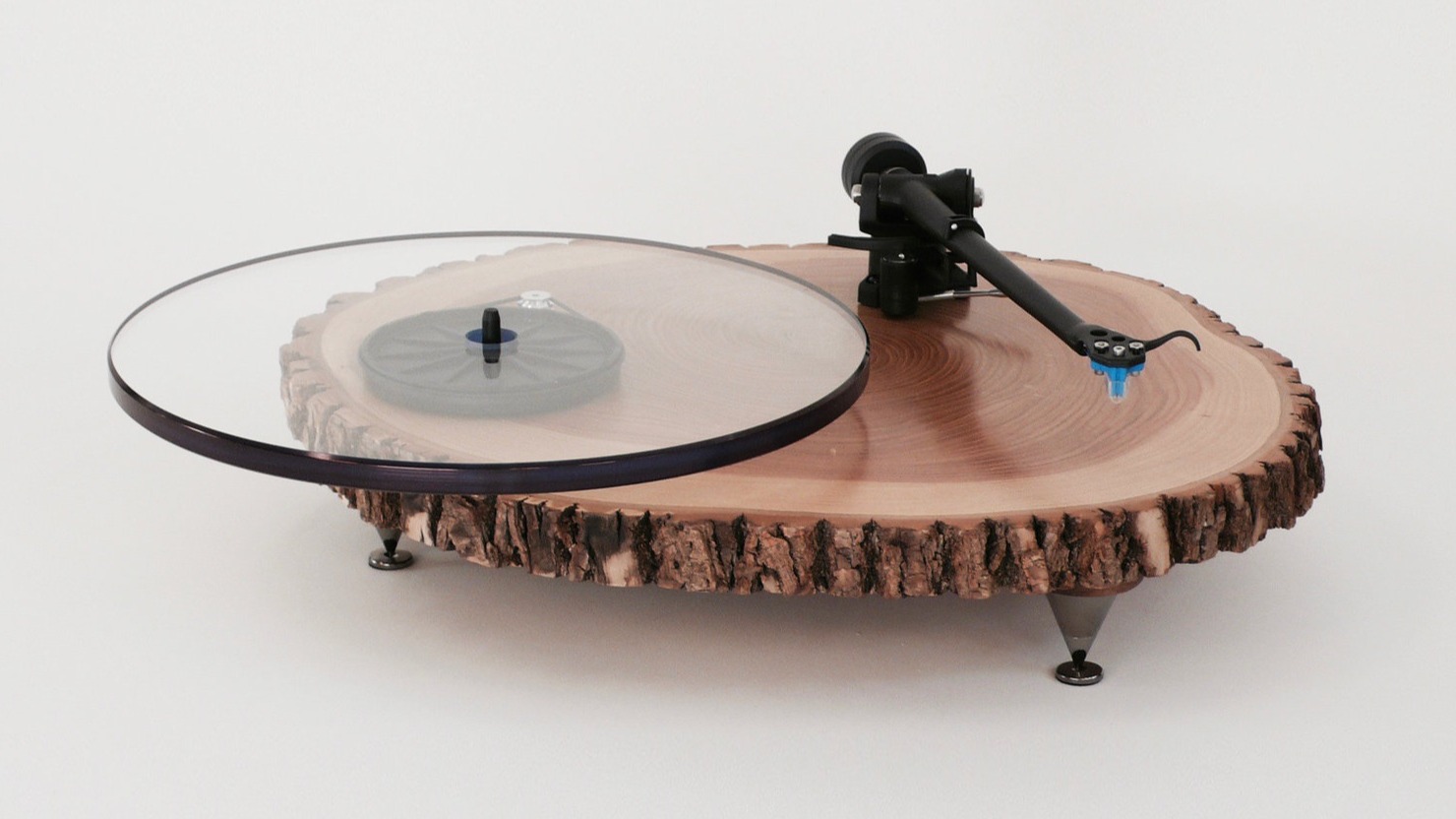
The Audiowood Barky is a turntable that the company itself says is an almost "embarrassingly simply design that is, in reality, very difficult to execute".
It uses an ash wood round as its plinth, which has been sanded perfectly flat. However, the nature of the wood means that any two turntables are never the same.
After being machined to very tight tolerances, the Barky is fit using turntable components from Rega, a glass platter which is offset from the plinth and a choice of pre-mounted Ortofon 2M Blue or Rega Carbon cartridges.
Either of these will cost $2,500 in the States, though the company does offer different voltages for other countries and international shipping.
11. Nakamichi TX-1000
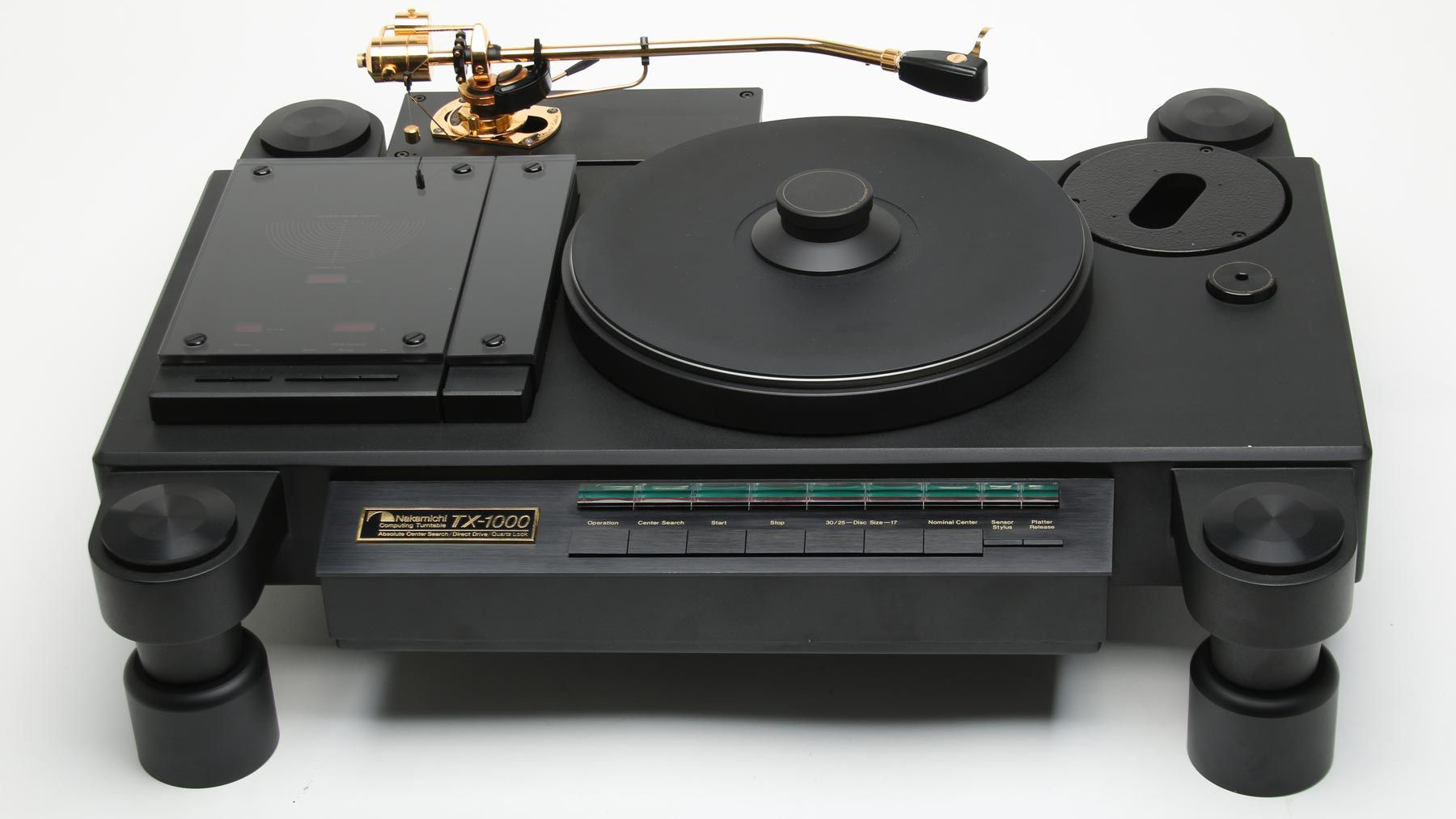
When the kings of 1980’s hi-fi engineering decided to make a turntable, you just knew it was going to be something special. The TX-1000 went above and beyond normal turntables because it was self-centering. It was actually designed to measure the accuracy of the hole in your vinyl and it could adjust the positioning of its platter to compensate.
A measuring arm hidden away under the left hand panel could swing into action at the press of a button – its sole job to measure the accuracy of the hole. Too big and you’re at risk of wow issues, also known as low frequency timing (or pitch) errors. The bigger the discrepancy, the bigger the problem. Once the record was measured, motors underneath the platter were able to move it around and place it the optimum position for playback. Clever.
12. Evan Holm's 'submerged turntable'
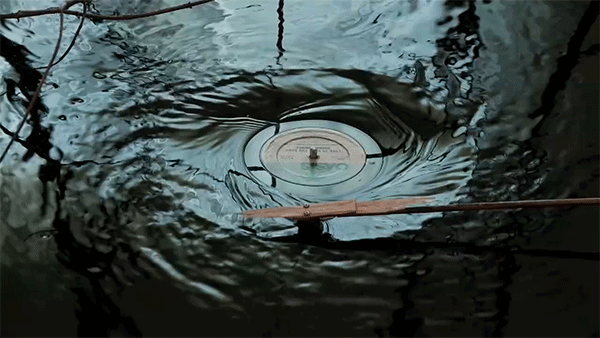
Ever wondered how a turntable sounds underwater? Artist Evan Holm created a big water feature with a submerged turntable as its focal point. The controls are built into a tree that's also part of the installation, for an extra touch of weird.
The record sits secured just below the surface of the water, creating a vortex as it spins. You can see it in action in his demo video, and while it's hard to tell how it sounds, we’d like to think it boasts a fluid sense of timing...
13. Davinci Audio Gabriel
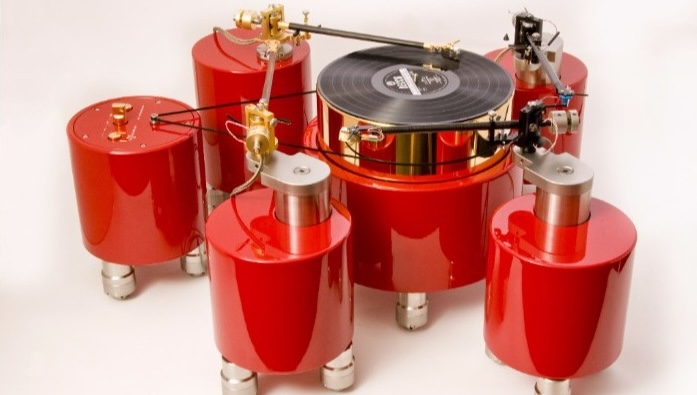
The Davinci Audio Gabriel comes in three versions, and this is its most extensive. Dubbed the Monument version, it comes with four tonearm bases and weighs and incredible 165kg.
Why you'd need four tonearms is a little bit of a mystery to us, but the Swiss-made turntable isn't making any excuses for its extravagance. It promises completely silent magnetic bearings, its own motor and motor control unit, a stable power supply and a platter with integrated damping system.
We know its single tonearm version costs $79,000, so if you have to ask the cost of the four-arm set-up, well, you know what they say...
MORE:
Ok those are the weirdest, but how about the best turntables you can buy?
Take a look back at the best turntables of the 21st century
What Hi-Fi?, founded in 1976, is the world's leading independent guide to buying and owning hi-fi and home entertainment products. Our comprehensive tests help you buy the very best for your money, with our advice sections giving you step-by-step information on how to get even more from your music and movies. Everything is tested by our dedicated team of in-house reviewers in our custom-built test rooms in London, Reading and Bath. Our coveted five-star rating and Awards are recognised all over the world as the ultimate seal of approval, so you can buy with absolute confidence.


